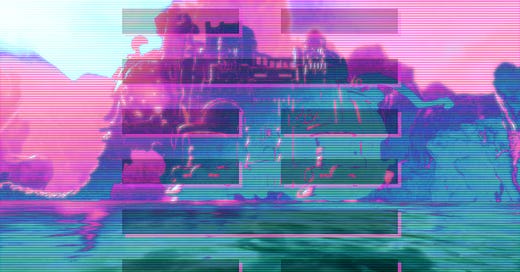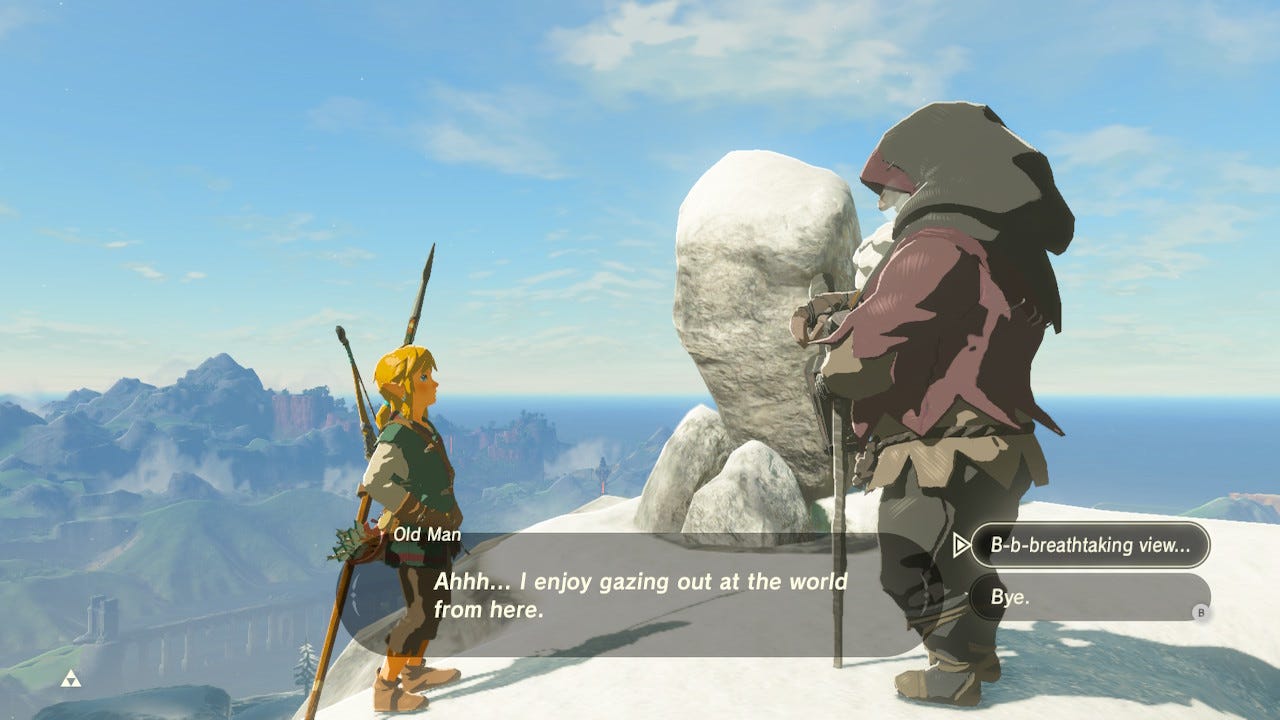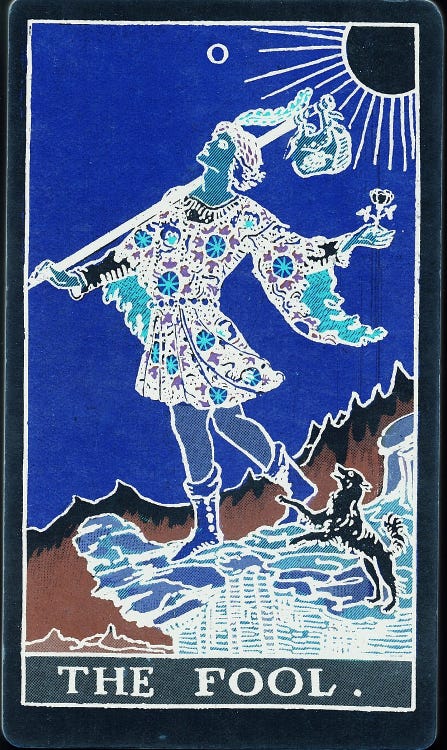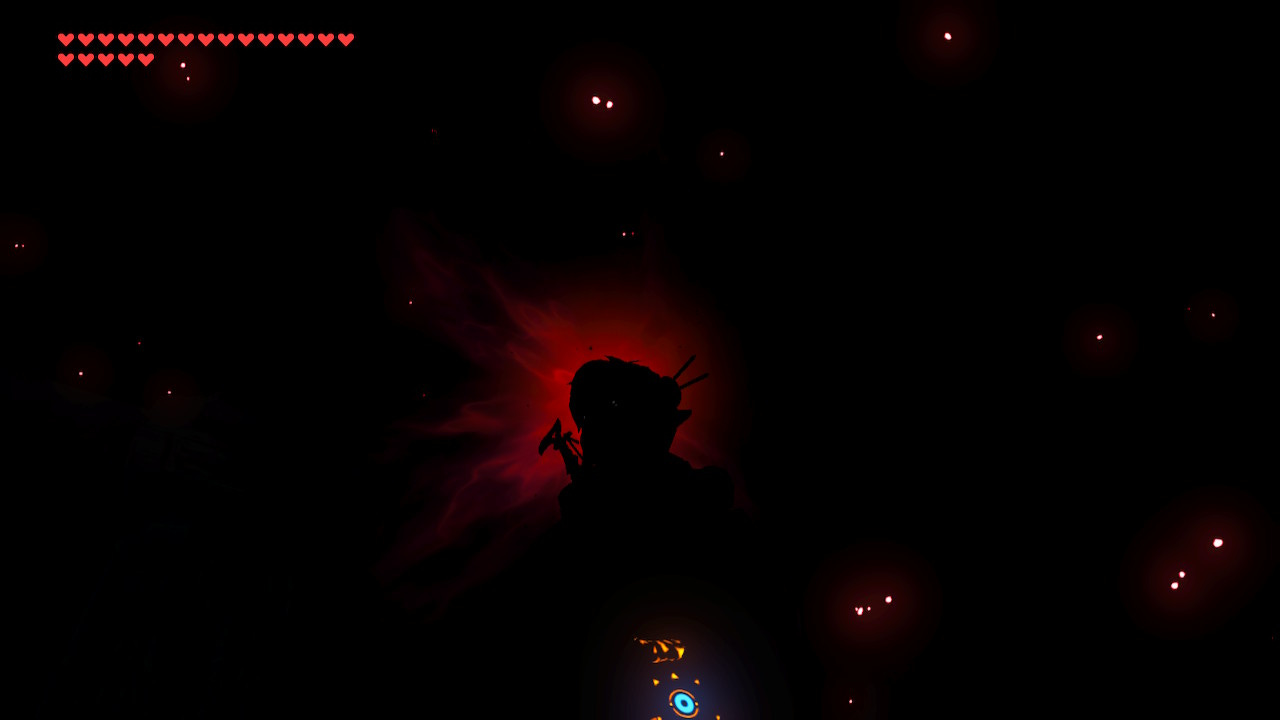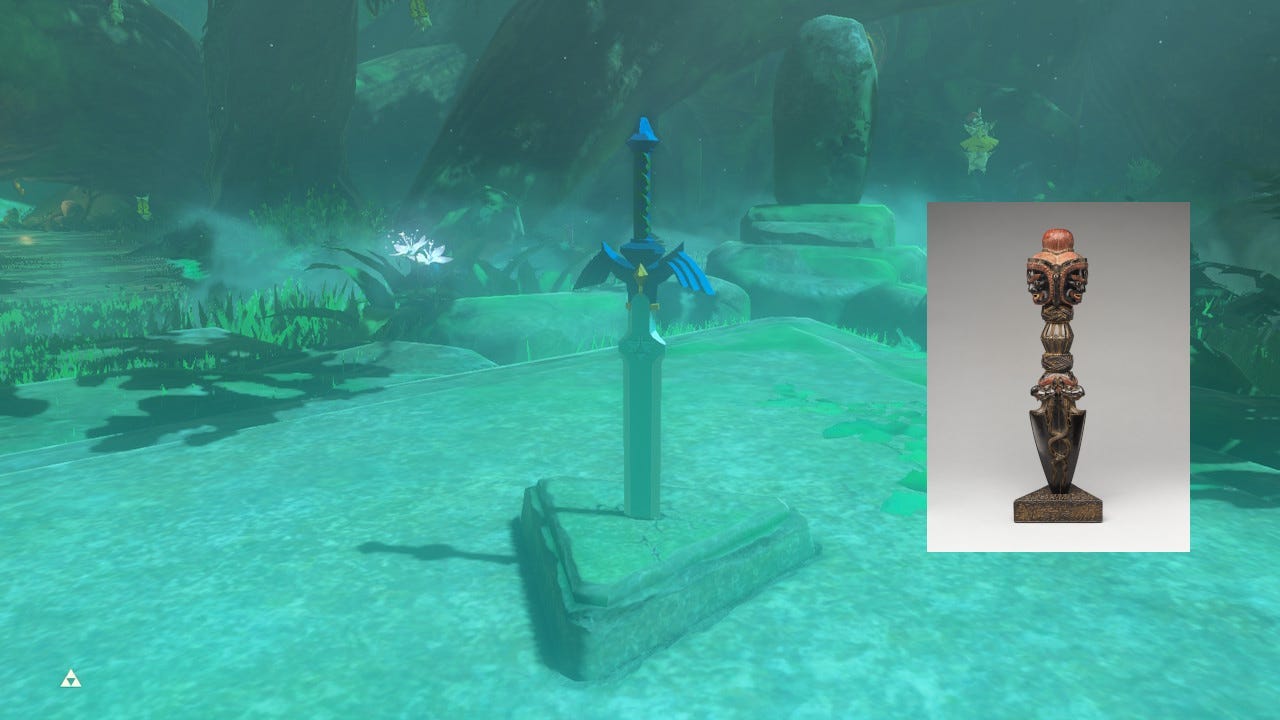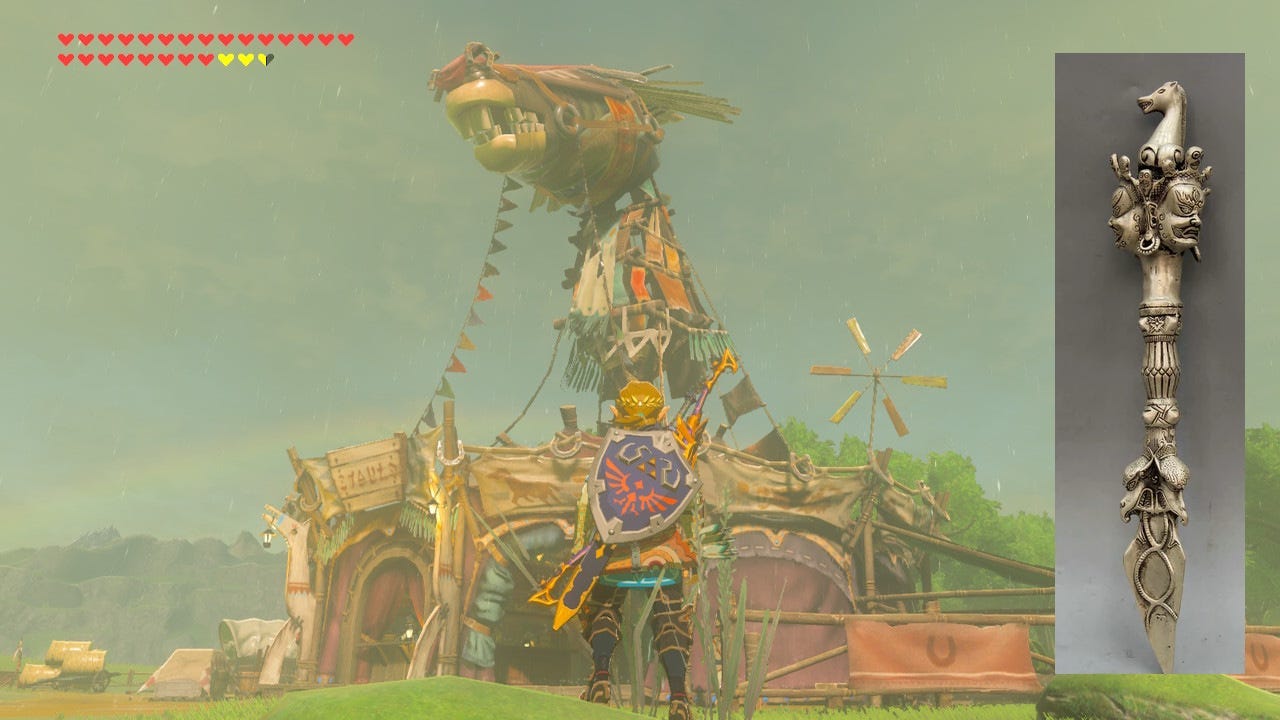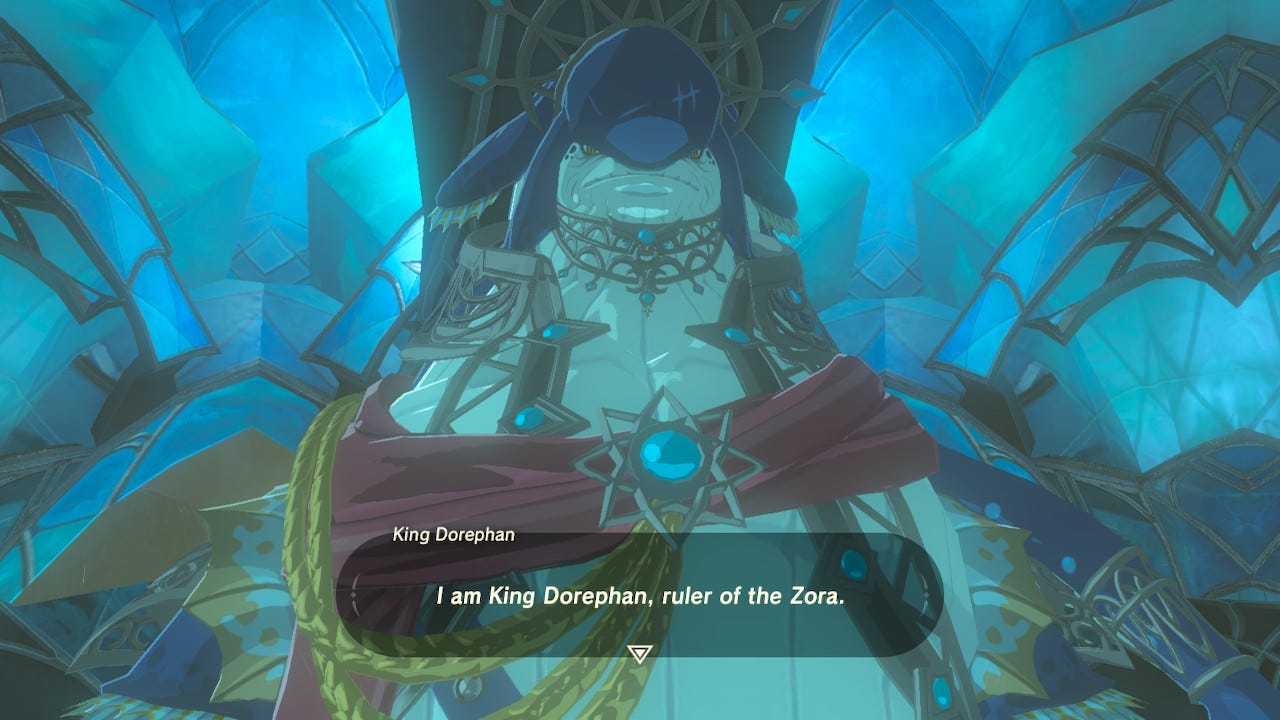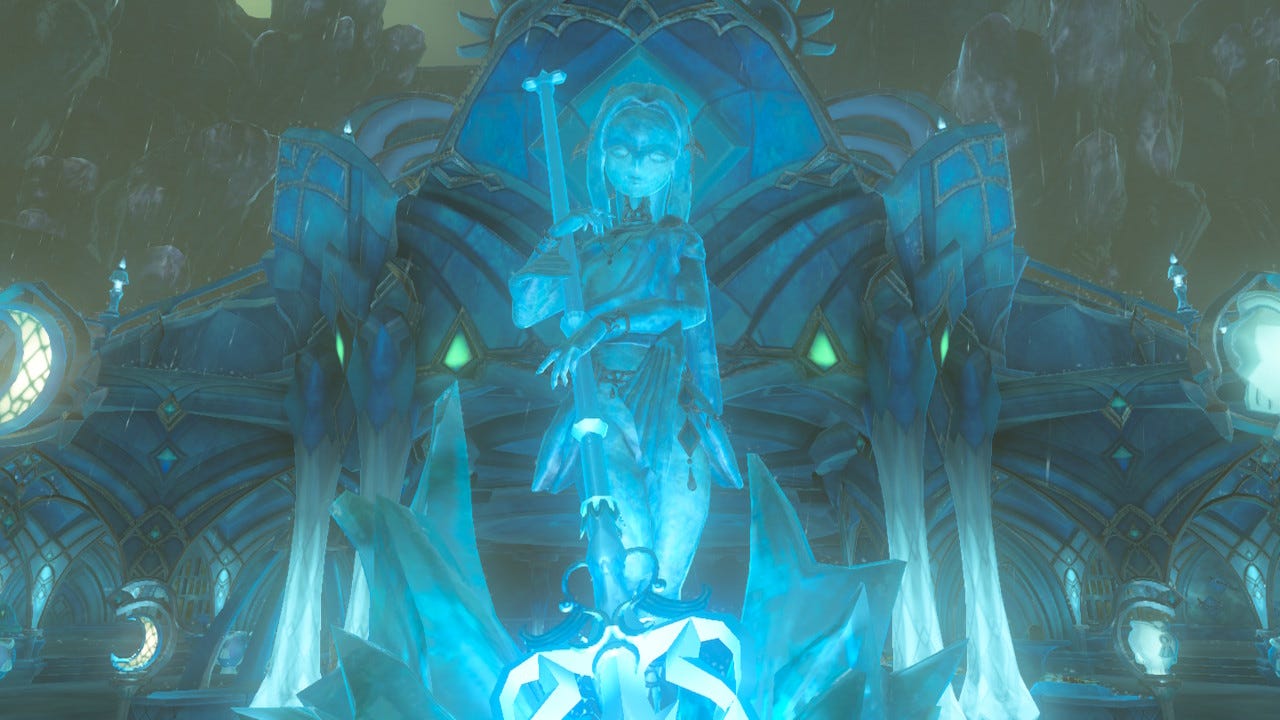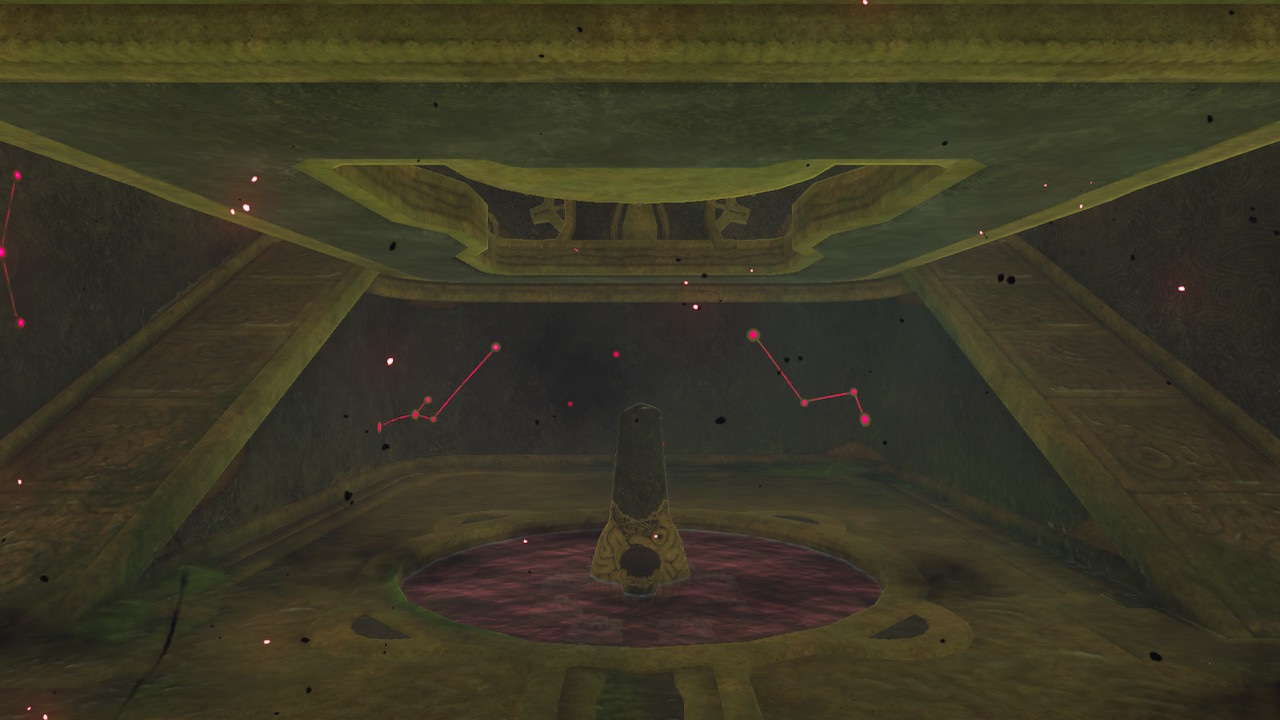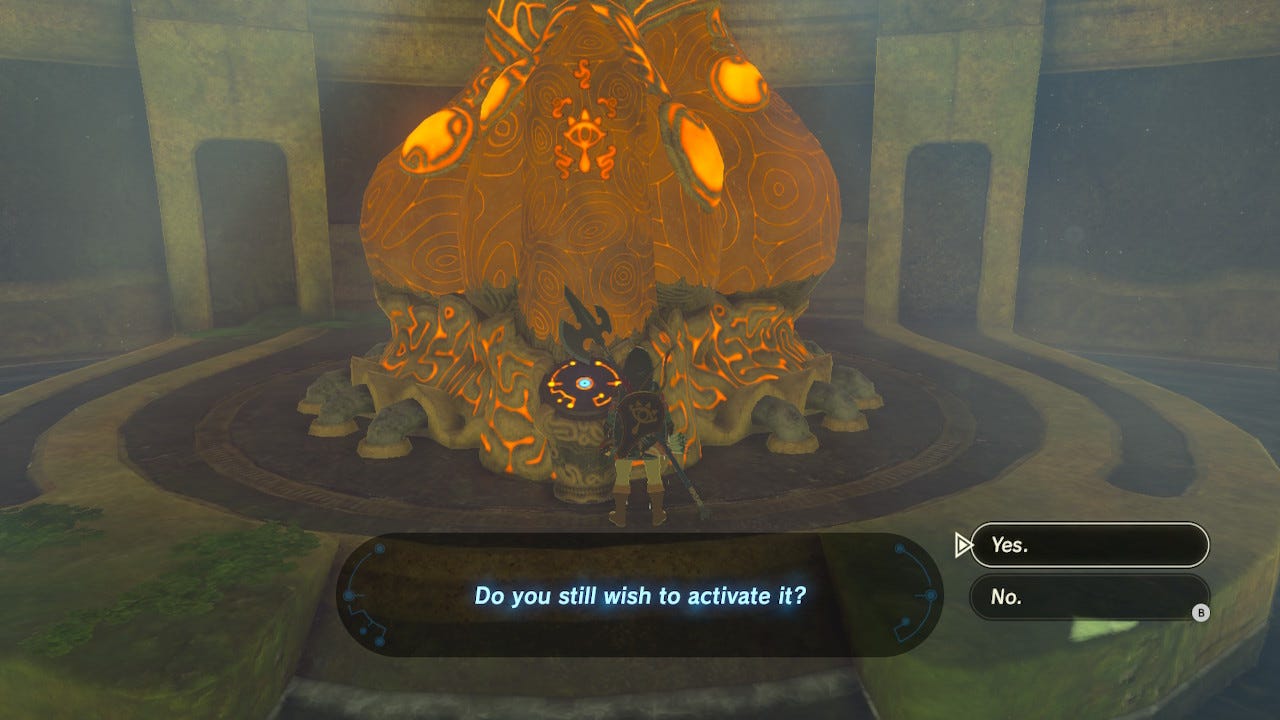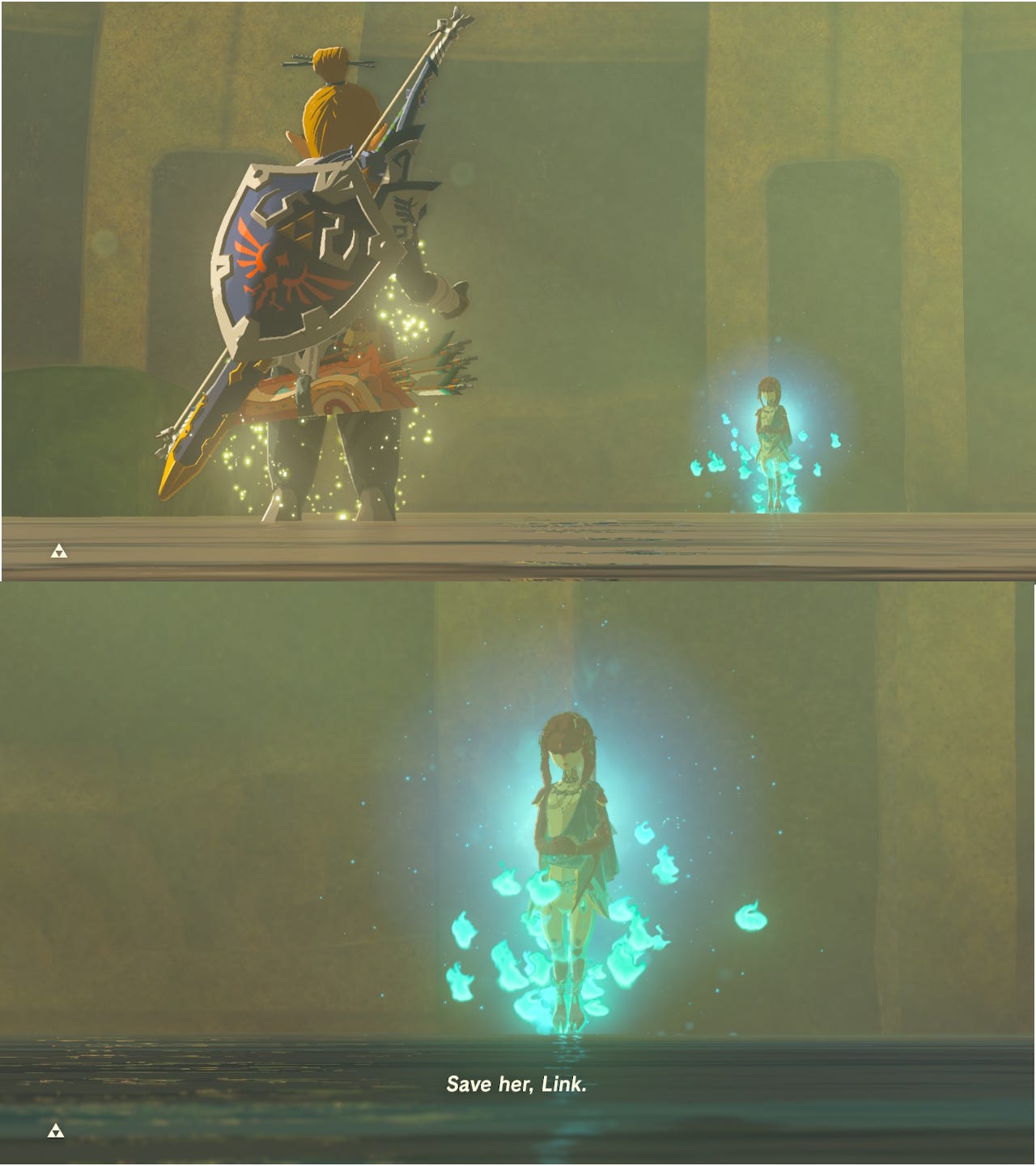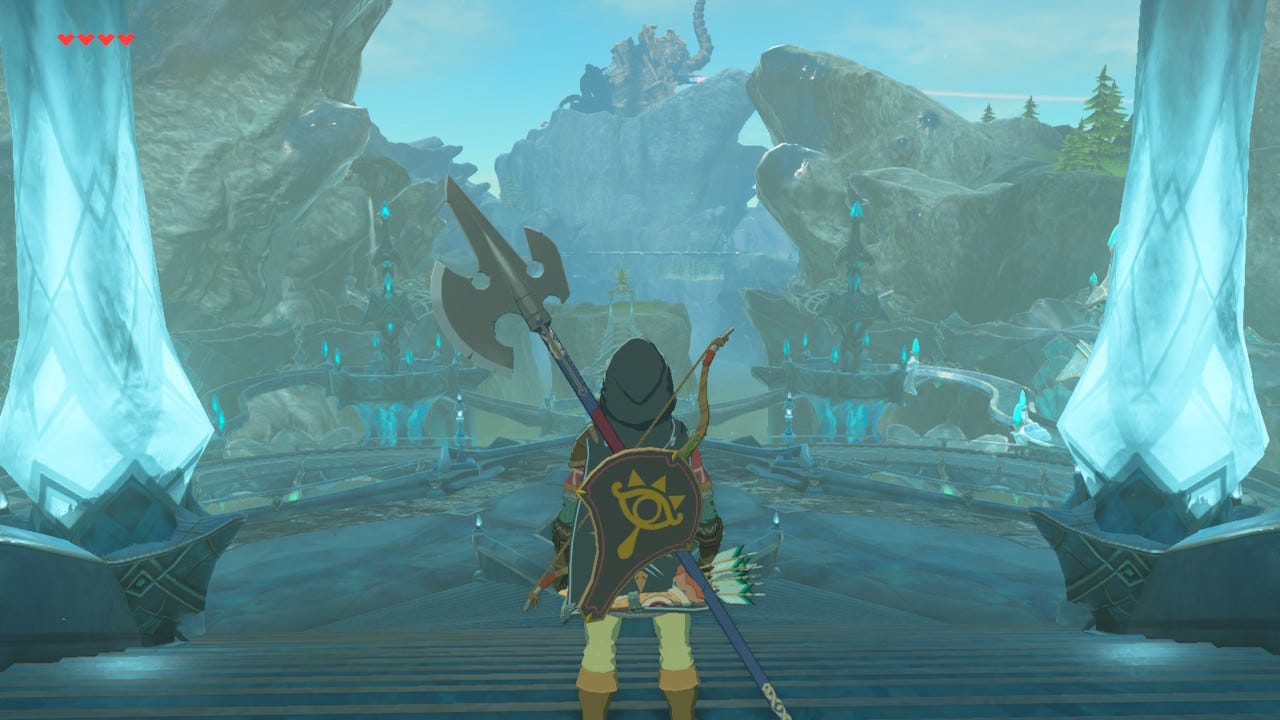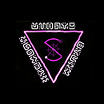Greetings, my friends! Happy Saturday.
I am all sorts of excited to be writing this post.
I have finished my initial reading of Kenneth Grant’s Nightside of Eden, and I have seen more than enough to fully flesh out this post about the esoteric significance of the element of Water in The Legend of Zelda: Breath of the Wild (and, to an extent I will explore separately, also in its sequel, Tears of the Kingdom). In fact, I’ve come away from the book with considerable insight about the entire Hylian Banishing Ritual, along with the bigger picture connected with the Word of Hermekate. I came away with new insights that apply to most of my life, if you can believe it.
Since my last post, I kept telling myself, “Maybe you’re getting carried away about this ritual’s nature. This sounds kind of nuts.” Then I would read 3 or 4 things in Nightside that line up with or explain too much, and end up even more convinced that I’m right about this. Much of it will come clear as I proceed through this series.
I still have more updates to make to The Hylian Banishing Ritual, but I held off on making any following my previous post because I could already tell, a couple-dozen pages into Nightside, that there would be more tectonic shifts to come. As such, I figured I should just wait and do it all at once. I’ll update that post one more time once all of these moving parts come to a complete stop.
And of course, that was a segue into some additional “cleanup” to do regarding the HBR as a whole before we begin our foray into Zora’s Domain.
Reading this book also helped jar me loose from a point at which I’ve been stuck in writing a manuscript. Introducing the work and ideas of Kenneth Grant into the synthesis that has been brewing here thus far has some interesting ramifications, especially considering how explicitly I emphasize the themes of Left Hand Path Initiation. Up to now, this has included heavy doses of Anton LaVey, Michael Aquino, Don Webb, and Stephen Flowers.
Whenever you trot out the phrase “Left Hand Path,” it’s a tossup what kind of associations you’re likely to conjure up in the people who hear you. There are various figures whose public personae are synonymous with the term, but different names are most likely to spring to mind for different people depending on how they use the term.
There is enough variation that in the entire book Lords of the Left-Hand Path by Stephen Flowers—regarded by certain whole branches of the LHP as a standard text on the subject while being largely shunned by other branches—there is scarce mention of Kenneth Grant at all. Meanwhile, to some people, Kenneth Grant is practically the backbone of the modern Left Hand Path.
How does that work?
It’s a very complicated subject and I can’t wait to sell you a book about it, but what I can offer here is a quick explanation for one element of this gap.
My first post here at World of Ruin was my review of Don Webb’s How to Become a Modern Magus: A Manual for Magicians of All Schools. As I related in the review, one of that book’s best features is the chapter about the real dangers of occultism. One of the ones Webb discusses there that I haven’t seen treated anywhere near as thoroughly elsewhere is the danger inherent in coming into contact with “transpersonal forces.” He talks about how said forces have a way of seducing curious mages and psychonauts, often roping them into fanciful “missions”. It’s the kind of thing old-school occultists used to call “obsession.”
From what I presume to understand of Don Webb’s point of view, particularly as a High Priest Emeritus of a school such as Temple of Set, that kind of danger just might be one of the major concerns with highlighting Kenneth Grant’s work and calling it “Left Hand Path.” This gets nuanced, but I think that at a basic level, Don Webb and Kenneth Grant would probably agree about the relative dangers here, but from there, the Setian and Typhonian schools each take completely different approaches.
Grant’s fascination with the eldritch phenomena (and, indeed, noumena) of the Abyss is palpable in his writing, and that’s exactly how a person ends up in “obsession.” From what I’ve seen, it’s debatable how much Grant himself may or may not have qualified as being “obsessed” by Abyssal forces. I know most occultists either love his work or can’t stand it. Reactions are rarely neutral or lukewarm.
From a Setian point of view, as fascinating as those things may be, there is also a recognition that to a large extent, those things are only important to the degree that we choose to engage with them. Most Setian objectives can be achieved—and probably better achieved—by largely ignoring the Abyss and its distractions. Michael Aquino emphasized dumping anything to do with the Qabbalah entirely, and I can see the merit in this, even if for a limited period of time. Keeping the Qabbalah at the center of everything can result in…pardon the expression, but…”tunnel vision,” which it just may have done for Grant from a purely theoretical standpoint.
More than this, intentionally monkeying around with forces such as those represented by the Tunnels of Set comes with risks, including what Michael Aquino referred to as the rising of “Id monsters,” whereby the primal, atavistic parts of ourselves that our activities tap end up inflated and out of our control. People get hurt this way, even collaterally; people around the magician, people who never asked for any part of it.
From this point of view, there is likely too much emphasis in Grant’s work on cataloging strange and admittedly fascinating phenomena, on the sensationalism of it all, with much less emphasis on practical ways for a magician to harness, or at least master, such forces. These are instead all the forces that a Left Hand Path magician is seeking to overcome, and I think the Setian philosophy largely opines that the best way to do that is to avoid feeding them with one’s unprovoked and unwarranted attention.
This is fair, and a person as prone to escapism as me has taken some lessons from such an outlook. However, there is another side to this coin: Once a person’s perception opens up to the activities of the Abyss, they are, by their nature, exceedingly difficult to ignore. Thus, I think Grant’s philosophy was rather that of taking the opposite tack and exposing as much as he could, confronting these phantasms head-on, because another curious feature of Abyssal phenomena is that it often takes some time to recognize them for what they are. It is much easier when you know some of the signs.
It’s a conundrum; giving the signs in advance can potentially help wayward travelers who have inadvertently strayed into certain waters, but at the very same time, it also increases the odds that a person will indeed be blown into those dark and treacherous waters to begin with. Such is the nature of the Abyss and its happenings. They are “sticky” that way, and thus treated with great care. As Grant quotes Michael Bertiaux on page 250:
In the Druid metaphysics, which is more ancient than the Celtic religion…the study of Universe ‘A’ [the known universe] is called ‘ontology’, or the science of being, while the study of Universe ‘B’ [the Meon, or unknown universe] could only be called ‘meontology’, or the study of non-being. However, they [i.e. the Druids] do not develop this conception very well, out of fear of contacting the beings in the other universe.*
*Italics by Grant.
And I like this quote because my first teacher, Matt, was training me to be a “Green Mage,” and the next rank in Green Magic, according to him, was what he was: “Druid.”
Regardless, it’s clear now that my approach will be to synthesize a happy medium between the two above viewpoints, and it appears at this juncture as though the Hylian Banishing Ritual is how I am doing that.
One thing that’s fascinating to me about this entire process is just how deep it runs. I have mentioned before how Don Webb wrote in Overthrowing the Old Gods that as a Magus utters their Word, they can look back and see its “foreshadowings” in different events all throughout their life. There has been a similar pattern afoot here; I’ve been working on this ritual for much longer than I realized, without understanding just what it was (see what I mean about these things not being immediately apparent?)
I realized while finishing Nightside of Eden up that the signs of the true nature of this ritual have been present all along, and I just didn’t have the right cypher to read them.
I’ve mentioned in recent posts that I’ve been working with Red and Black Flames in banishing rituals for a number of years. I left certain details out, not even realizing at the time how relevant they were.
What I left out was that, originally, I had separate rituals—or at least separate “layers” of ritual—for standard, “Blue Flame” banishing, and my other work with the Red and Black flames. In my standard version, I began in the East, and the use of the Blue Flame signaled that everything was normal.
However, I had a deep urge to add a layer to this ritual using the cross-quarters instead of the main cardinal directions. I had gotten as far as deciding that this new layer would employ the Red and Black Flames, and I had even gotten as far as deciding that the entities I was going to place at these cross-quarters would be wild animals. The one thing I was lacking in all of this? A reason for the existence of this second layer. I had no idea what I wanted this additional layer to actually “do,” I just really felt moved to build it along these guidelines anyhow.
I had no idea at the time that the colors of red and black and the concept of atavisms—primal, animal forces and drives—were all so deeply interwoven together in the writings of Kenneth Grant and Michael Bertiaux. Now that I know these things, I can put all of this into context.
Why’s that?
Remember something I pointed out in The Hylian Banishing Ritual? The Divine Beasts just happen to be placed closer to the cross-quarters than the cardinal directions.
Oooooooooohhhhh.
The plot thickens.
It was all so irritating at the time, but while living in Texas, it just so happens that our house was placed in a “skewed” relationship with the cardinal directions; that is, here in Chicago, the streets all run either north/south or east/west.
Our streets ran crosswise—such that if I wanted to align my banishing ritual with the cardinal directions in my temple space, I had to orient myself to the corners of the room. It was very disorienting…but now, of course, it makes sense.
In retrospect.
(As an aside, is it not also cool that the intersection was that of Xavier and Ignatius? Does it get any more “Blood of the Saints” than that? Living at a crooked intersection of streets named after Christian mystics, on a lot number with the same Hebrew Gematria value as your Word?)
I may not have made my meaning clear enough yet, so allow me to do that.
As I wrote in both What Child Is This? A Merry Zelda Yule and The Four Gifts of the Great Plateau, Breath of the Wild opens on said Great Plateau. Link very soon meets The Old Man, who tasks him with collecting the Spirit Orbs from the plateau’s four Sheikah Shrines. In return, the man will give Link the paraglider, which will allow Link to safely leave The Great Plateau to freely explore the greater Kingdom of Hyrule.
There’s imagery at one point in this initial task of Link’s that looks suspiciously like imagery from the Tarot—namely, The Hermit card—and this becomes the game’s first really obvious prompt to be on the lookout for such things. If you’re a seasoned Tarot vet, this will jump out at you when you see it:
Elsewhere, as the two discuss the laughable prospect of Link’s leaving the plateau without the paraglider, looking over the cliff to the ground below, the Old Man also makes a reference to “fools” that brings another card to mind.
In tribute to the “widdershins” concept of “Universe B” or “the other side of the Tree of Life,” I’ll present the card with the color scheme inverted, which not only transforms the card into a veritable treasure trove of Typhonian symbolism, but in so doing, seems to directly reinforce Grant’s theories regarding said “otherworld,” because again—in order to achieve this effect, I literally just ran “Invert” from the Color menu in GIMP. This card is the “negative image” of the traditional version:
Qabbalistically, The Fool corresponds with the first Hebrew letter, Aleph, and it sits right at the very threshold of Kether—the highest Sephirah, which is entirely infinite and unbound by form or definition. The only way to go from there is down. Down where? Well, the next stop down is The Abyss. Such is the symbolism of the card: The Fool is Kether, and the yawning chasm into which he is about to fall is The Abyss.
By analogy, this suggests that the four Sheikah Shrines—placed as they are more or less in line with the cardinal directions—represent the standard Lesser Banishing Ritual of the Pentagram. The Great Plateau symbolizes the upper reaches of the known universe, our world, where our banishing ritual is sufficient to protect us from the lesser elementals and astral creeps our magic(k)al activities may attract.
Once we come down from that cliff, however, and descend into Hyrule…
…we’re in Universe B.
Yes, at the bottom of the Tree is Malkuth—”Kingdom”—just as the Kingdom of Hyrule. So long as you stick with The Blue Flame, may that remain so. However, the introduction of either the Red or Black Flames signifies that on the way down to the Kingdom, one fell through The Abyss and into the Tunnels of Set.
And that puts The Divine Beasts into a whole different perspective.
It also puts my past efforts to construct a second ritual layer into perspective. It’s almost as though I knew all along that the potential, the “blueprint” for this ritual existed, but I just wasn’t conscious of it. The most intriguing part, though, is how all of it is being drawn out by something like a video game that is so completely tangible and external to me.
I can’t tell you the number of times it has felt to me as though this game were literally designed for me to walk in and use it to do this work. You know how the story in The Golden Dawn was that all the rituals and grade materials were handed over wholesale to the founders by “The Secret Chiefs,” ready to roll?
This is almost like that, where I could found an order and go around telling people, “Yeah, creating this was Satoru Iwata’s last dying wish. This game is the result of a secret plot linking Japanese Freemasonic Lodges with the Yakuza. It’s all a scheme to get revenge on America for World War II by ‘corrupting’ its youth with deep esoteric knowledge woven into video games designed to function as virtual Mystery plays. It’s just crazy enough that it might work. I think some of them knew my father back in his CIA days.”
I don’t think so.
Fortunately, the explanation, “Oh, it’s just the ultraterrestrial denizens of the Void trying to break through again” works better than that one, in an “Occam’s Razor” sort of way.
So; knowing now that the significance of The Divine Beasts is this deep…what do they mean and why?
For the answer to this question, we must turn first to the East and to Divine Beast Vah Ruta.
Heading Off The Deluge
It’s been difficult to decide how to approach the topic of the element of Water in this newly-expanded context. After all, it’s…a pretty big subject.
A good starting point seems to be to return briefly to the previous discussion regarding the differing ways of defining “Left Hand Path,” because my experience of playing through Zora’s Domain the first time sharply emphasized a filter colored by the writings of Temple of Set-affiliated authors. This was built atop a previous exposure to LHP tantra via past connections with The Theosophical Society, and through books like Kali Kaula by Jan Fries and Aghora: At The Left Hand of God by Robert Svoboda.
Nightside of Eden forever changed the way this game comes across to me.
I write about using video games for “Self-Initiation,” and I know certain people probably scoff and maybe even wonder if I’m sure what the word “Initiation” really means, but I’m pretty serious about it. I was a different person before I ever played this game, and then a different person after the first playthrough, and a different person still after the second. This time? Phew. And these recent two iterations—after applying lessons learned from all the others—those were pretty targeted in terms of objectives vs. outcomes.
So I think the best way to tackle this would be to first discuss how most of this struck me the first time through. Some of this will be repetition of things covered in past posts, so apologies to my more long-term readers.
First, I remind readers who may have been with us for a while that this game was suffused with a sense of the profound for me from the very beginning, because I had been dreaming about it. In fact, having long since abandoned console gaming, this game was the entire reason I bought a Nintendo Switch at all, and it was because of those dreams (among other things, such as the results of a one-off AI-based magic(k)al operation detailed in the post Cornerstones).
Later on, I ended up finding that the odd place I dreamed about exists in the game, improbable as that may be given its form: Thyphlo Ruins. It’s an “island” (its “moat” isn’t a vast span of water, but it is a deadly murk, like quicksand) completely shrouded in thick darkness, even in broad daylight. The only thing that shines through it from outside of the island is The Blood Moon.
So after dreaming about this creepy-ass place, I started playing the game and noticed all sorts of references throughout The Great Plateau—including but certainly not limited to the blatant tarot references shown above—that would be easily recognizable to occultists. “Eastern Abbey?” Come on.
I haven’t brought up the phurba references lately, so I’ll just drop two of those that require zero explanation, and anyone who doesn’t know what a phurba is can Google them and have a fun little afternoon with that rabbit hole:
I didn’t need to see The Divine Beasts in order for it to be clear something was up in this game, okay?
That being said…
…wow. My first encounter with the Zora was one big gut-punch.
As I have related in past posts, the early-game “content curation” doesn’t end with The Great Plateau even though you’re technically cut loose at its end to find your fortunes as you will; The Old Man sends you to Kakariko Village, specifically via Dueling Peaks.
It’s an iconic locale in the game; quite scenic and memorable, especially if you’re viewing it from the walls surrounding the Eastern Abbey and are thus primed to realize this is almost certainly a reference to Twin Peaks.
This is why, in The Hylian Banishing Ritual, I go out of my way to describe it for visualization by the operator even though it’s not technically in-line geographically with the corresponding Beast: Because the game does send you through those peaks to get there.
From there, Impa gives you obvious work to do if you want to be as prepared as possible, but by and large, she gives Link the quest to Free the Divine Beasts.
All four of them are marked on the map simultaneously, this is true; however, there is a strong consensus among the fan base that the game was designed in many ways to “encourage” the player to free Vah Ruta first. There are both geographical and quest-based cues.
Here is what turns out to be the first such cue—although we don’t know it at the time (wink, wink). It will only sink in later, in bitter, painful retrospect. It comes to us from the optional quest, “Captured Memories.” In short, Link gets a “Sheikah Slate” in this game, which is kind of like a tablet; he has no memories when he wakes up, but there are a bunch of photos on this device that were taken by Zelda with him present. If he goes to each location shown, there’s a glowing pool there through which Link can re-live the corresponding memory.
And of course, as soon as Link walks out of Impa’s house, the first person he sees (Pikango) gives him a quest that ultimately leads to the nearest memory. Here it is:
The reference in question comes to us from Princess Mipha, the Zora Champion, when she starts to give Zelda advice about how to awaken her healing powers. The poor girl had no clue how much she was about to embarrass herself before Calamity Ganon reawakened at the precise moment before she did so.
As we’ll see, she appears to realize it in hindsight.
To cut to the chase, I’ll just state once more that Link is drawn mostly by the landscape itself down into Lanayru Wetlands from Kakariko Village, where he’s very likely to bump into one of the Zora envoys sent out to direct any sturdy-looking Hylians to meet Prince Sidon at Inogo Bridge.
Now, in hindsight, the first indicators of something potentially “Typhonian” at play turn out to be the race itself: The Zora. First, there’s their status as a “hybrid” race, fully amphibious dwellers of both water and land. One theme that came up frequently in Nightside of Eden was the symbolism of frogs, especially in connection with the Egyptian god Heqet. Their “liminal,” amphibious nature was an important part of this symbolism—so much so, in fact, that Grant consistently linked all of these symbols in turn with the Goddess Hekate. The historical accuracy of this is disputed by “the Hekate community,” within which it is common to hear seasoned members bemoan another person making the claim again that the two are connected. I’ve got to be fair to my Hekate peeps about that.
Of course, I happen to be of the mind that it doesn’t matter whether or not there is a historical basis for the connection; by the very nature of these phenomena, I don’t think that detracts from the potential relevance of the symbolism from a mystical perspective—and it remains consistently relevant symbolically regardless of the historical veracity, so we will gladly take the association as valid.
As we’ll learn, “waters” are a main theme running all the way through the Typhonian current (say, where did we get the word “current” for the thing that a “magic(k)al current” is?), involving symbolism that will likely re-assert itself in future posts even as we move on to the other elements. In fact, this feature of The Abyss (and the Night Side of the Qabbalistic Tree of Life) is one that I picked up on myself without prompting, and later connected to their Qabbalistic corollaries. “Abyss,” of course, is a term that applies equally to large, empty voids of space as to vast spans of ocean. This is one of the primary reasons it’s so fitting to approach Water first in a ritual such as this one. As I have related to a friend or two, my own journey across the Abyss was absolutely rife with nautical symbolism related to ships, maps, sea creatures, etc.
The next subtle indicator of “High Weirdness” related to the Zora is something as seemingly-innocuous as the first letter of the name of their species: Z. Grant mentions that the letter “Z” is particularly resonant with the back of the Tree of Life and this has to do with the fact that Z is the English transliteration of “Zain,” the Hebrew letter, meaning “sword” (see Master Sword images above—central plot importance!), attributed to The Lovers card. This is central to the Mystery of The Wordless Aeon upon which Grant elaborates in the book—but I’ll cover that in a separate post.
A lot of the other symbolism that I encountered the first time has already been covered in the post Sweeping the Temple Threshold with some of it appearing elsewhere still, but briefly:
Prince Sidon: At the time I was playing this part of the game for the first time, I was also reading the book Temple of Set by Michael Aquino. Incidentally, as I’ve mentioned, I was jolted into picking the book up by a random comment that stood out on Facebook from a stranger telling Don Webb that he had read up to a certain page in the book; and I looked out of curiosity, and that happened to be exactly the page I needed to read to answer some burning questions I’d had for a while. I am now friends with that man and he is cool. I have him to thank for the way pretty much all of this hit me because that got me to pick up the book. I had just read the chapter “The Sphinx and the Chimera,” a written account of a working by Aquino, which mentions Sidon as well. Sidon was an ancient city (and is still a city) in Lebanon. Following up on this footnote led to my learning about Tyrian purple dye, a rare dye made from shellfish indigenous only to that particular region. It was extremely expensive due to its rarity, and so was only used to denote royalty. This symbolism is reflected in the background color of this site. As it happens, Prince Sidon himself (along with Princess Mipha) is a color which, while not exactly Tyrian purple, does carry a “regal” tone.
The references to Tyre and Sidon had me thinking Phoenicia thoughts while I played through Zora’s Domain, and because history is not my strongest subject, I pretty much generalize that with Babylon/Mesopotamia/Sumeria/”all that,” and so this part of the game’s resonance with traditional flood myths was echoing in my mind even the first time I played through it. Though, to be fair, there are obvious cues to such associations regardless. As I would learn in Nightside of Eden, the flood myth, dealing as it does with an inundation of water, is a theme Grant deals with. He hinges entire, audacious theories on it, such as the notion that the global prevalence of flood myths is evidence of the fact that the denizens of “the other side of the Tree” periodically succeed in invading our planet. To what degree this is taken literally is unclear to me, but he seems pretty agitated about it from this one book. This kind of thing was not exactly lost on me the first time through this part of the game, but impressed me even more this time.
The circular shape of the city: I have previously mentioned the circular shape of Zora’s Domain and some of its potential meanings, including the fact that its circular nature makes it essentially Goddess-oriented or feminine in nature. I associated this, in tandem with the nature of the element of water, with the idea of a “womb,” which turns out to be apropos from a Typhonian perspective as well, because every bit as much as the Abyss can be thought of as a “sea,” so, too, can it be thought of as a “womb.” This is, of course, the basis of the term "Babe of the Abyss.”
Another matter of which I have made much is the deep symbolism relating this general geographic region of the game with the tarot Trump X: Wheel of Fortune—and, by extension, the planetary energies of Jupiter:
Divine Beast Vah Ruta: “Ruta” is one letter away from “ROTA,” appearing on the front of the card. The actual model of Vah Ruta in-game has rotating wheels on either side of its head, as well.
While the city is shaped like a circle or wheel, the nearby Ploymus Mountain towers above it; the reader may notice that “Ploymus” is an anagram of “Olympus.” Atop Ploymus Mountain, Link must collect 20 Shock Arrows (think lightning + top of Mount Olympus = Zeus = Jupiter). Also, the arrows are fired by a Red-Maned Lynel, which is a “hybrid” beast similar to the cherub sitting atop the Wheel in the Wheel of Fortune card. Taken all together, the city and the mountain are like a tableau of the card itself. This is doubly interesting because in the book I was reading while playing this—Temple of Set—Michael Aquino recommends the novel The Magus by John Fowles, saying that it contains some themes relevant to the Setian view of Initiation. As one may guess from the title, its message is particularly relevant to a person of the grade of Magus. Near the end of that novel, yet another spelling of this mountain’s name—this one spelled “Polymus”—appears as a meaningful pun. Food for thought.
Anyhow, this way in which the game “physically” (i.e. geographically and geometrically) builds esoteric symbolism into the landscape of Hyrule itself is, I believe, one of the keys to the efficacy of The Hylian Banishing Ritual. Essential to the way this works would be deep experiential familiarity with the game world, so that it impresses the operator that much more deeply in ritual when it is recalled in visualization. This would ideally be paired with considerable existing familiarity with Western esoteric symbolism (though there is, of course, no shortage of “Eastern” symbolism as well, since the game came from Japan) as one plays through the game, because this is how the experience of moving through and interacting with these environments will have the greatest impact.
So, it may feel like just silly goofing off, but simply playing the game becomes a key ingredient in all of this. As I do this, I like to think of the concept of “lila,” or “divine play,” from Hinduism. I ride through the fields and glide through the skies of Hyrule, experiencing my joy as a devotion to Hylia herself.
Speaking of Goddesses…
…I have not been a complete stranger to the prospect of the validity of Kenneth Grant’s work. With all this wheel symbolism, what else is a person like me thinking of as I travel this zone of Hyrule?
Viewed from above, Zora’s Domain also looks a lot like Hekate’s strophalos.
Also, the Zora crest, featured prominently in the city’s architecture, is a triple moon symbol many modern witches will recognize.
I tell you, I thought to myself the first time I saw the city (smartly, the designers molded the path that takes Link to the city so that you approach it from above), “I bet if I read Hecate’s Fountain, I’ll find all sorts of crazy shit that ties in with this place.”
So there.
Wrote Grant in Nightside of Eden:
But prior even to the Cult of the Twins, ancient as it is, the Cult of the Trinity, or Three in One, existed with the Mother Typhon as the primordial source of creation who contained within herself the child (Set) whose potential was actualized as Horus. This triple character was assigned to the Moon of Hecate, and the Jews also preserve the tradition in their earliest formulation of the Tree where it yet remains under the forms of Daath, Yesod, and Malkuth. Daath was the cosmic moon and the source of the illusion of phenomenality, i.e., the ego; Yesod was the astral or celestial moon, the moon of magick and witchcraft; Malkuth was the physical moon that generated glamours on the earth plane.
p. 112
These attributions may prove important to keep in mind going forward.
Of course, it all has a great deal of personal relevance to me.
All of this symbolism coming together in the same place…it was weird. Wheel of Fortune? Hekate? Hints of watery symbolism suggesting waters somehow deeper than water itself?
I’ll be blunt, by the time I was having this experience, I was just coming to terms with the idea that I could think of my experiences at the time in such terms as “Crossing the Abyss.” Very recently, in fact. I had that conversation with a friend within days of playing this part of the game, where he reminded me about The Oath of the Abyss and we agreed that everything I was experiencing was basically how life would look if one were to take said Oath and for the universe to respond by making it obvious. In other words, there was so much synchronicity that was so deeply tied to my subjective state that interpreting everything as "particular dealing” of myself with God (or whatever) was pretty much the only way to get through the day and stay sane.
But where had all of that symbolism converged before?
I remembered the night I set up an altar to Hekate in the basement of this house, “skyclad” aka nude, and filled the room with thick clouds of Dragon’s Blood incense, declaring my intention to “explore my sexual nature” in Hekate’s name. I had just ended my relationship with The Priestess, the Priestess who had ushered me into Hekate’s Mysteries. Oh, the irony of that statement, when one considers that another one of the key notes of Kenneth Grant’s dispensation was the assertion that the Typhonian Mysteries are inherently, deeply psychosexual in nature.
And lo, the very next day did I stumble across the profile of one “GoddessFortuna,” my Veronica. It wasn’t a run-of-the-mill dating site, either. It was pretty explicitly for hookups. I didn’t know it at the time, but V was married, so even though she claims her husband knew what she was up, because I didn’t know about him, the whole thing was rather licentious. Very “Babalon.” Like she was my “Scarlet Woman,” yeah? Except we totally fell head over heels in love. And within two years, I would be up Daath Creek without a paddle.
You’d best believe that my first playthrough of this part of the game deeply impressed me. I do not flinch to describe it as “Initiatory,” considering all of the symbolism coalescing right before my eyes in one place where I could take fucking screenshots of it all. “Self-Initiatory?” Nah, maybe not, because of how random it was at that point. But “Initiatory?” Yes. But that’s just some LHP-bred splitting of semantic hairs.
Given the way everything was lining up, if Link—as the game’s protagonist, whom I was controlling—represented me, then who would V be in this scenario? It may sound like a strange thing to even think, but trust me, given the way things had begun to shake out in my life by that point, I had come to realize that that’s how things worked. Everything had meaning. Everything. It wasn’t even hard to see. I didn’t have to squint. I just had to remember it was always there, and that’s when it wasn’t already so obvious that it felt like pie being rubbed slowly into my face.
After his first meeting with Sidon, Link has a bit of a gauntlet to run in order to reach the city of Zora’s Domain, which is nestled firmly into a little nook at the mouth of the Hylia River, completely surrounded by waterfalls and cliffs. Link faces Lizalfos, who are chamelon-like lizard-warriors, as well as a couple of Moblins—large, hulking, anthropomorphic bull-men. At several points along the way, Sidon calls to him, encouraging him to persevere, and always grinning with a twinkle.
Upon arriving in Zora’s Domain, where it’s pouring rain, Link meets Sidon in the throne room, along with his father, King Dorephan.
As I’ve highlighted previously, another reason this zone stood out to me is because the theme of music runs through these people; “Sidon” is a reference to the notes “Si Do,” as is “Mipha” to “Mi Fa.” Even King Dorephan’s name phonetically spells out the Japanese convention for saying the notes “Do Re Mi.” Naturally, my main takeaway from this was a confirmation of the validity of my concept of the Song of Hermekate—especially given all of the weird LHP symbolism around this place.
At any rate, Link meets King Dorephan, whom he does not remember, but who remembers him very clearly even though it’s been 100 years since they last met (the Zora live a long time). I noted right away that King Dorephan is wearing an 8-pointed star on his chest. As we come to learn in this game’s sequel, Tears of the Kingdom, that emblem is a symbol of the throne; Dorephan passes it on to Sidon as part of the royal succession during that game’s events.
Even then, I knew what that symbol could mean, and Grant did not disappoint to bring it up in the early pages of Nightside of Eden: Among other things, it was a symbol of the Goddess Ishtar, a Goddess of Love and War (Hell yes!)
It’s fitting to see here for a few reasons, but we’re about to learn about the main one: Link’s relationship with Princess Mipha.
As Champion of the Zora, Princess Mipha is a bona fide warrior herself; it’s part of her duty to train in combat so that she can aid in the battle against Calamity Ganon in any way possible. As part of this office, she wielded the legendary Lightscale Trident. This is significant, too. In previous posts—as fixated as I was on the view of the Left Hand Path from within Setian philosophy—I connected this with the symbol of the trident that appeared in the emblem of the original Order of the Trapezoid connected with the Church of Satan—and by extension, with the Temple of Set’s version of the same Order.
The idea taking shape—I don’t mind admitting now—was that I may one day be called upon to form my own version of those Orders. Incidentally, both of those Orders draw much of their symbolism from the literature of H.P. Lovecraft, who also inspired Grant’s work; my notion at the time was that perhaps I would do with the themes of Zelda what had been done with the themes of Lovecraft in the two respective existing Orders of the Trapezoid. I think the link to the “direct current” running out of The Abyss probably goes all the way back to Lovecraft himself—his own fictional universe is already rife with the essence of it all, so building an occulture around it comes with a lot of aesthetic “heavy lifting” already done and it really just needs some ritual structure built up to support it.
This new iteration would more intentionally enshrine the feminine principle, as seemed to be suggested by Mipha’s presence in the game.
Now, although I have learned that the trident is relevant as a symbol in the Typhonian current in its own right and those former ideas don’t necessarily follow from the circumstances—I’m not too sure it would be such a bad idea, at that.
I’ve been chewing on it, that’s for sure.
At any rate, the allusion on Dorephan’s chest to a symbol associated with Ishtar works because not only was Princess Mipha a fighter…she was a lover. As we come to learn, she was deeply in love with Link. That embarrassing thing she almost said in the clip before from Captured Memories?
She straight-up almost told Zelda that when she wants to tap her loving power of healing, she thinks of Link.
Can you imagine? Oh my god.
This devotion to Link was very explicit; Mipha had crafted Link a Zora chestplate, which in the Zora culture is like giving a man an engagement ring. It’s so explicit that there’s a point at which the player has to put the chestplate on and show it to old Muzu so he’ll believe Sidon’s claim that Mipha loved Link, because Muzu has the information about how to calm Vah Ruta, but doesn’t want to give it up to a charlatan.
What’s the problem with Vah Ruta? Well, it’s a giant elephant that holds dominion over the element of Water, and it’s endlessly spouting rain. It currently sits in the middle of East Reservoir Lake, which is gradually filling up. If it overflows, Hyrule will be inundated. The Zora will be okay, but the Hylians (and other people) will not be so fortunate.
So…a flood metaphor? Alrighty then. Nothing about this screams, “Link needs to hold the Forces of Choronzon at bay so they don’t overwhelm Hyrule” when viewed from a Typhonian context, does it?
Nope. Not one bit.
So, Link ascends Ploymus Mountain to grab 20 Shock Arrows, hoping to dodge the Red-Maned Lynel—by whom he is almost certainly outmatched at this point—then swoops down to meet Prince Sidon at East Reservoir Lake.
Riding on Sidon’s back, Link runs circles around the possessed and corrupted Divine Beast Vah Ruta, who retaliates by lobbing huge chunks of ice at the two Champions. There are four orbs on the Beast’s back which need to be hit with Shock Arrows. This will calm Vah Ruta and stop the flow of water.
As soon as Link enters the gigantic elephant, Mipha contacts him telepathically. Tragically, she passed away 100 years ago when attempting to do battle with Waterblight Ganon, the elemental aspect of Calamity Ganon sent to possess Vah Ruta (so if the Guardians are somewhat analogous to the Archangels, and Gabriel is water, then by the same logic, Waterblight Ganon is akin to the Hylian answer to Arch-demon Leviathan). Her disincarnate spirit has been trapped here ever since she died. A similar fate was shared by the other three Champions.
Mipha guides Link through the puzzles within Vah Ruta. First, he has to activate a main terminal that gives him basic access to the Beast’s controls. With this, he can see a map of the inside of Vah Ruta, and also control the angle and positioning of Vah Ruta’s trunk, which spouts water. This becomes an element of the puzzles that need to be solved so that Link can regain full control of Vah Ruta. After activating the main terminal, he must locate and activate 5 auxiliary terminals. As Grant notes, 5 is a powerful number related to the Goddess.
As if to confirm this—along with the general, developing Left Hand Path theme here—the last of the terminals is initially surrounded by fire, which gets doused by the water from a re-positioned elephant trunk. As a result, the terminal is revealed to be a Shiva lingam. No? Bet me. Look at it! And we just ritually bathed it.
With the 5th terminal activated, Link is able to activate the central terminal containing Waterblight Ganon.
In other Hekate-relate symbolism, I always thought it was weird how much these terminals resemble onions or garlic, both of which are sacred to Hekate. It’s weird, right? What else would that shape be?
Link does battle with Waterblight Ganon; I was happy with how well I did this time! I did not lose all of my hearts once—and I only had three of them! I’ve had plenty of practice, I guess. He was a chump.
It’s bittersweet at the end; Mipha appears before Link “to full physical appearance,” as all the Goetic sorcerers like to say. She’s very happy to be reunited with him, even if briefly. However, she understands that the circumstances are dire.
She gives a gift that I think is highly relevant to the symbolism of the Waters of the Abyss: Mipha’s Grace. What it does is it resurrects Link when he dies in battle, with full health plus 5 temporary yellow hearts. It’s not a surefire; it has a 10-minute cooldown, so it will only save Link once in a while. Still, that’s big, and it will help ensure success, which is important—because Link has a job to do. He can’t afford to die. Hyrule can’t afford for him to die. So, he can go all the way to the brink of the Abyss and come back…thanks to Mipha’s Grace.
This is actually so symbolically fitting in connection with her other gift to Link—the Zora Chestplate—that it’s actually pretty charming. The chest is ruled by the zodiac sign of Cancer, for reasons that are illustrated well by the sign’s symbol of the crab, as well as by its alternate symbol from ancient Egypt: The scarab, Khephra.
In the Thoth tarot version of The Moon card, Khephra is shown bearing the sun/moon under the waters of the Abyss between the two towers. Likewise, Cancer is the zodiac sign ruling The Chariot, which has symbolism related to Mipha’s gifts to Link.
In ancient Egypt, some important people were buried with scarab charms inscribed with their Ren, their divine name. These amulets were said to protect their souls in the afterlife. If I’m not mistaken, the specific part of the soul the charms protected was the Ab—the heart. That is what these amulets were designed to protect, and why they are associated with Cancer, which rules the chest.
And that tells you all you need to know about the symbolism of this chestplate, which bears the emblem of three moons on the front—thus tying it symbolically to both cards mentioned above.
The reason it would have been so embarrassing if Mipha hadn’t been so fatefully interrupted by the awakening of Calamity Ganon before finishing her sentence is that everyone knows Link and Zelda are shipped.
The game never makes it explicit, and the developers have gone on record saying it’s up to the individual player to decide. But we all know it: They’re in love. It’s all over Zelda’s face in several scenes; it’s all but confirmed in Tears of the Kingdom, where we learn they’ve been shacking up in the house that used to be Link’s—and there’s only one bed. It’s also pretty obvious from the hidden 13th memory, where we learn that it was apparently Zelda’s love for Link that finally awakened her power to seal evil—which always makes me cry:
Mipha, what the hell were you thinking, girlfriend?
And the saddest part of all is that in her 100 years of solitary contemplation, it would appear that Mipha realized her error. The way she parts ways from Link says it all.
Also a tearjerker. Hold on, I gotta wipe my eyes right now.
You Spin Me Right Round, Baby
So, the implication here on my first playthrough really was—in personal terms—to tie these meanings to Veronica, in which case the implication would be that she might be my “Mipha.”
That has some…unsettling implications. I mean…if she’s my Mipha, then, I mean…she’s not my Zelda, is she? So then who will be? Or who was it?
This highlights another reason these waters are often so strongly warned against; who the hell really needs factors like that clouding the way they make some of the most critical life choices?
I remember that coming up from the first time I played this game and it staying on my radar ever since. This was right before V went down to Texas, too.
In seeming confirmation of this, there is this note from Nightside of Eden:
617 is a number of major importance in the traditional qabalah. It is the number of the Law (ThORA), the Gate (ThROA), the Wheel or Chakra (ThARO), and the Goddess of Love (AThOR, or Hathor). It is also the number of Adonai, the Holy Guardian Angel, spelt in full. These ideas combined adumbrate the formula of this path, for when the chakra of the goddess is subject to the law or rule of 671 (i.e. Lafcursiax), the Gate of the Abyss if thrown open.
p. 213
This seems to clearly explain the connection between all of the Jupiterian symbolism of the Wheel of Fortune and the Crossing of the Abyss. All of the above associations related to the isopsephy of the number 617 are relevant to the story of Link and Mipha. And they are also all relevant to the story of Veronica and I.
The symbolism also makes sense structurally in that the Sephirah situated just beneath the Abyss is that of Chesed—itself associated with Jupiter. One must pass through Jupiter in order to enter the Abyss from this side of the Tree of Life; that’s how it works. This is reflected in the game’s symbolism quite clearly.
The Mysteries of the Left Hand Path—particularly those pertaining to processes such as apotheosis—are deeply related to the Goddess and to sexual forces; the heart center or Ab is definitely involved. Zora’s Domain is shaped like a wheel, and the gift of Mipha’s Grace will preserve Link’s life in the same way that certain operations preserve the Ab from the caustic waters of the Duat.
It fits.
Writing about my experiences has been tough, but I haven’t been alone. More and more, people are beginning to break the long-standing taboo on talking about things like The Abyss, and I think this is a good thing because we’re at a point now where all the right information is out there now for people to fairly easily throw some of these gates open by accident; as such, my own story is living proof that for some people, a few avenues, a few inroads into how these forbidden waters work can arm us sufficiently to survive our own completely accidental shipwrecks.
Call it harm reduction.
Almost by default, this changes the rules about things. Secrecy was once kept for reasons of safety (among other, perhaps even more compelling ones of prestige if we’re being honest, which is all ego games), but now it may be wiser to let people have these tools and use them at their own discretion.
One thing that’s becoming more common is people talking about this stuff on YouTube. That needs to be taken with a grain of salt. A lot of these folx I see are just trying to sell you a magic(k) course, and it doesn’t sound like their information is very reputable. Especially now that I’ve read Grant, I think a lot of it is vague and thus highly suspect.
There was one video I watched that I wasn’t sure how to interpret. The creator of the video seemed genuine; at the very least, it seemed like he at least believed what he was saying. I listened with an open mind.
He mentioned that his experience of Crossing the Abyss was Initiated via a ritual to Hekate, and that he felt this was very successful, recommending it to others.
Ritual to Hekate, you say?
He went on to talk about a relationship that he got into right away, with someone who seemed so amazing and wonderful at first, and it seemed like a clear result of the ritual. Things were looking good.
Huh. Tell me more.
Yeah, but then the cracks started to show, and the relationship ended up really doing a number on him. Everything he went through was painful, but meaningfully tied, in his mind, to his spiritual objectives in making the crossing, which was better than nothing. She took things from him that he didn’t really need anyway. But she herself, in his view, pretty much was Choronzon. And he said that if any guys out there meet a woman right after doing their ritual to Hekate to cross the Abyss, it was almost certainly Choronzon, and she would almost certainly bring the pain, and your experience wouldn’t be over until you put her behind you.
Interesting.
Look, I could see how some of that could be applied to my situation, but something about the way he generalized it, like “Yeah, this is how it’ll happen for a lot of people,” seemed suspicious to me. Given my experiences, I’d think these things would be maybe more idiosyncratic than that, no? He’s got to just be fluffing this up for content and ratings for his channel.
But it really did sort of fit my situation.
Ritual to Hekate, you say? Crazy, man.
Let me just say that it all looks very different to me now, playing through this zone of the game from Chicago just after leaving Veronica, with all of the perspective I have gained from my initial reading of Nightside of Eden.
Verily, there is Water and there is Water. There’s the water you drink when you’re thirsty and crossing the desert, and then there’s the seawater surrounding you for miles in every direction when you’re marooned on a long voyage. You don’t want to drink it. This latter water is more like the Waters of The Abyss than the Water dealt with in a standard banishing ritual.
This water burns like acid, too.
What is a “black magician?” What can one expect to encounter on The Left Hand Path? When I first played through the element of Water, I subscribed to a school of thought that rejected Crowley’s interpretation of the black magician as “evil,” instead taking it as a point of pride, but which seems also to err on the side of caution when it comes to some of the sensational phantasmagoria that comprise the Typhonian current. I had, of course, heard of Grant’s “Tunnels of Set,” especially in terms of how the concept has influenced groups like Dragon Rouge; I wasn’t so sure, however, that I even believed in the reality (or at least the necessity) of working through the inverse side of the Tree of Life. Some of it did seem kind of “woo-woo.” But woo can also be fun, no?
I take heart in a definition of “black magician” offered by Grant, which has proven the right “solution” to help me make progress in much of my work:
Khep-Ra is literally the backside of Ra (the Sun), i.e. the Moon. The waters refer to Mv, the water of the Abyss. The towers are those of the Black or Dark Brothers. This points to a mystery concerning the true meaning of Black Magic, for the Dark Doctrine is that of the Dark Brothers who appear upon earth (i.e. on the hither side of the Tree of Life) a Black Magicians. Crowley, it seems, was unaware of this signification otherwise, he would not have referred derogatively to Austin Spare as a ‘Black Magician’, which Spare assuredly was in the sense just explained, for he was an initiate of the Dark Doctrine.
p. 243


